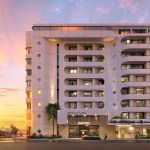To cut to the chase: REITs on the JSE are listed equities and subject to the ebb and flow of market sentiment, which is both to their advantage and their disadvantage. We believe there is room to add a more stable ingredient to a diversified property portfolio, which is offshore listed but untraded real estate direct equity.
The FTSE-JSE SA Listed Property Index is currently 48.8% down over one year. At its worst point, on 15 March, it was down 62% from its one-year peak. But on a three-year view, the picture is even worse. It shows share prices have been declining since January 2018.
There’s no question listed property share prices have been massively oversold. They are showing a panic reaction to the bad news that lockdown-hit tenants are struggling to pay rentals or unable to pay at all, and that many iconic retail brands and businesses will close down or be forced to aggressively restructure in the next few months as embattled consumers will not come to the rescue.
Current share prices suggest that SA’s major property companies will not pay dividends in the near future and will have to write down the value of their portfolios by as much as 30% in some instances, destroying millions of Rands of value. It is highly likely that there will be a temporary suspension of dividends, even in the REIT environment where distribution is a legal requirement, and the revaluation of assets will shrink balance sheets, possibly creating short-term liquidity pressures.
Clearly, market sentiment has over-reacted and in the long term much of the value will be recovered, which will see REIT share prices on the JSE claw back to previous highs. And that assumes the world is not changed forever.
But this is not the kind of rollercoaster ride that retirees signed on for when they invested in listed property. They wanted a stable income stream with some reasonable long-term capital growth to counter inflation and currency devaluation.
REITs are attractive vehicles, in many ways. They offer entry to a pool of curated investment properties which are professionally managed. Unlike directly owned property, it is easy to trade in and out of a REIT. But that is the problem. Share prices respond not only to the quality of assets or increase of nett operating income but also to investor sentiment as a whole.
Taking those factors into account, OrbVest designed a property investment product which is a little different. It offers investors the ability to invest in high-value commercial buildings that they would not normally have access to, with the same level of careful selection and diligence that a fund manager would apply, but in an environment that is not subject to market fluctuations, and a value that is underpinned by the value of the single building that the investor selected. So it’s like owning the real estate directly without the hassle of finding the right building in a foreign country, maintaining it and managing the tenants. Investors also don’t have contingent debt against their name.
How would you know what to buy, which country or state to invest in, and how would you work through all the complex tax and structuring requirements, even if you had access to millions of dollars needed to buy one of these prime assets?
OrbVest does it for you. It has a very ridged investment philosophy and only one focus: professionally managed medical office buildings in selected US states, where the demographics particularly favour the medical professionals who are the tenant base. These states have increasing populations who are also ageing, so demand for medical services will inevitably increase. People over 65 spend five times more on healthcare than those under 65 and the number of Americans over 65 is expected to near-double by 2060.
Investors earn a steady income stream for the period of the investment from the rentals paid. The initial cash returned to investors on these buildings over the last six years has been 8% a year in dollars. In rands, given consistent longterm depreciation of the rand against the dollar, it has been considerably higher in real terms.
The OrbVest model also works like private equity, and the building is required to be sold at the end of a five-year period. Due to escalation in rentals and some value play by the OrbVest managers, any capital gain is shared with the investor, taking the average total dollar internal rate of return (IRR) expected to be returned to investors to between 11-17%.
Rental collections from these medical buildings have continued to be resilient throughout the pandemic and lockdowns, so no write-down of value was necessary. Although there was a small dip in rental collections in April, OrbVest paid its highest ever quarterly distribution for the first quarter of 2020 in the middle of the lockdown and expects this will be maintained for the second and third quarters, demonstrating that to date, there is little effect from the global pandemic that has decimated the world economy.
The OrbVest medical office real estate in the US provides South Africans with an opportunity to invest in a strong economy with steadily rising GDP, in the world’s default currency, in a resilient, growing sector. It ticks all the boxes for South Africans looking for stable offshore assets, not only for wealth preservation, but also to earn strong returns.
And even if the world has changed forever, some things will always stay the same. DM



















 Become an Insider
Become an Insider